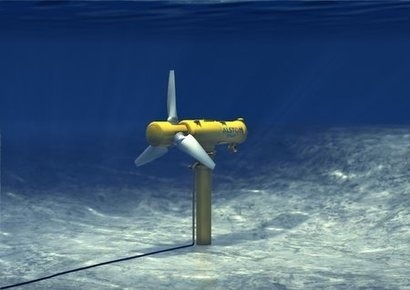
Alstom has been selected to supply four Oceade 18 devices to one of the world’s first tidal stream arrays in the Raz Blanchard, France. The design is at the leading edge of advanced tidal technology, having been developed from the 500 kW and 1 MW demonstrators tested at the European Marine Energy Centre (EMEC) in Scotland. Both demonstrators completed DNV GL Design Assessment and the company is now using the industry recognised DNV-OSS-312 to certify the Oceade 18.
The first stage in the process involves a full risk assessment of the turbine and agreeing actions to mitigate the risk of failure. DNV GL will work with Alstom to review and approve the design documents before heading towards the fabrication stage, including manufacturing quality and equipment testing and surveillance of the installation and commissioning. Final Prototype Certification of the turbine will follow the successful close out of the actions agreed during the Statement of Feasibility stage.
Currently, the UK and France continue to lead the way in terms of developing wave and tidal energy devices. The initiation of this particular project will demonstrate clear European market confidence in the Oceade 18.
“The Statement of Feasibility is the first milestone in delivering a high-performing safe & reliable tidal turbine for our customers” said Rob Stevenson, Vice-President, Ocean Energy, Alstom. “We look forward to continuing our journey with DNV GL to gain full Certification for the Oceade™ 18 - 1.4MW.”
Claudio Bittencourt, Business Development Director, DNV GL, added that DNV GL has worked with Alstom for many years and that issuing the Statement of Feasibility is an important step demonstrating that Alstom is taking a responsible approach to managing risk and putting in place the foundation for a successful project.
DNV GL has been at the forefront of the risk-based certification processes for marine and other renewable energy technologies for over 30 years and has been involved in assessing new technologies and publishing standards and guidelines to ensure components, technologies and projects are reliable, safe and commercially profitable, with all risks mitigated. The risk-based focus is also invaluable for offshore wind and wave and tidal projects, which are pushing the boundaries of technical and engineering knowledge and capabilities. As well as those, which require reliable operation and effective risk management at all times.
For additional information:

